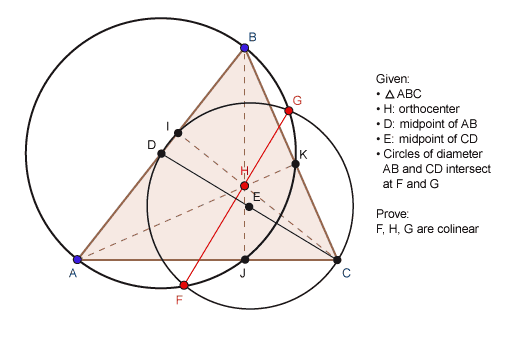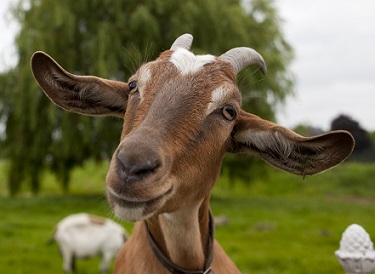4 Key issue 4: How can mathematics be creative?
‘What if …?’ questions can be useful to help establish a creative and enquiring approach in a classroom. The classroom can then become a place where mathematics is something that can be explored and created, and somewhere where the students can engage in genuine and creative enquiry. Many students enjoy practical work and practical representations can help difficult or abstract ideas become accessible to students. Practical mathematics can be described as mathematical activity involving the use of concrete materials, representations and situations where a student is physically engaged in the activity. Most often it involves one or more of:
- doing (for example, measuring, weighing, extracting information from a complex source, rolling dice)
- moving (for example, moving themselves to illustrate, for example a trend line, using a mirror to generate different images, rotating an object, exploring an outside environment)
- making (for example, models, a board game, a plan or scale drawing)
- using (for example, compasses, weighing scales, a database)
- visualising (imagining an image and operating on it).
You will find ICT applications that will ‘do the practical work for you’, for example showing a wheel rolling along a surface and showing the circumference of that wheel as a straight line. However, research (e.g. Miller, 2007) has indicated that such visual demonstrations do not aid students’ learning as much as if they do the practical activity themselves, although it is useful for the students to see what to do using ICT. Some ICT applications provide an environment where creative practical work is possible in a way that the students could not easily perform using paper and pencil or other modelling techniques:
- Dynamic geometry packages such as Cabri (or the free version on the Geogebra website) help the students understand what happens when objects move. The packages can be used to measure accurately so that the students can specialise, conjecture, generalise and convince. (See an example in Figure 6.)
- Graphing packages such as Autograph, which now go above and beyond simply drawing graphs, or other learning environments – for example, Grid Algebra, which enables students to ‘see’ algebraic concepts.
You can choose creative activities that have a clear idea of what learning you want to take place, the learning intentions made clear to students and (if possible) activities built into the task that focus on the desired learning outcome. (For example, the activity could be: ‘After ten throws, note what surprises you, try to predict what will happen next …’.)
However, it is not always necessary to know the learning outcomes at the start. Highly creative activities can also be used because they provide a rich mathematical environment that can be learned from. In both cases (but especially the second), time must be built in for reflection on the activity and the mathematics, and on what has been learned. Your role is to always plan explicitly so that students have the opportunity to make links between doing the activity and understanding and using mathematical concepts.
If you are organising practical and creative activities, you need to think about:
- time – to explain, rearrange furniture and students, distribute equipment, engage in the task/collect results, collect equipment, rearrange furniture again …
- equipment – what, from where, how many, if it needs to be booked out/distributed by you or selected by the students, recording what equipment has gone out so you know what’s to be collected back in …
- student grouping – how many, possibly not more than two or three, selected or self-selected groups, helping them to work together effectively …
- materials – worksheet with how much guidance, ‘real’ timetables, maps, paper, glue, how to store materials if the task continues beyond one lesson
- safety – what the hazards are and how they are to be avoided
- classroom – appropriate size and layout, to allow access to particular equipment.
Sometimes setting up a creative classroom involves changing routine problems into something that can be explored.
Example 1
The first example is a problem involving a tethered goat. (They always tend to be ‘tethered’ and they always tend to be goats, for some reason – although donkeys can also be substituted!)
A goat has been tethered with a 5m rope to the outside corner of a 3×4m shed. What area of ground can the goat cover?
So there’s the problem – can Example 1 be changed into an exploratory activity? Using the ‘what if …?’ approach involves posing some questions that add or change some of the constraints in the question. For example, what would happen if:
- the size of the shed or the length of the rope is changed?
- the shape of the shed is changed? (Triangular, circular, more complex ‘add-ons’ and so on.)
- walls, fences or trees were in the way?
- goats could fly?
- the area the goat could cover was specified (what length rope or what particular circumstances?).
The students can be involved by choosing which constraint they explore or adding to the list of constraints. By working in this way, ‘standard’ and routine problems can be transformed into something that asks for creative ideas and for the students to work in much more real-life ways – using collaboration, offering ideas, going up dead-ends and re-assessing progress.
Example 2
As another example, start with a statement of Pythagoras’ Theorem:
The square of (or ‘on’ depending on how you’ve approached it) the hypotenuse of a right-angled triangle is equal to the sum of the squares of/on the other two sides.
You may think this doesn’t look like a promising start for exploration! But if the constraints are changed, it is possible to find what would happen if:
- ‘square’ was replaced with other shapes – rectangles, triangles, semi-circles
- ‘right-angled triangle’ was replaced by other sorts of triangles
- ‘right-angled triangle’ was replaced by other sorts of shapes – quadrilaterals, pentagons
- other changes were made (what else might change?).
Reflection point
Try this yourself using a dynamic geometry package such as Geogebra, where measures can be exact and squares, triangles, etc., can be drawn accurately. Reflect on what it feels like not to have to use paper, pencil, compasses and rulers.
There are lots of ideas about teaching creatively on the NRICH [Tip: hold Ctrl and click a link to open it in a new tab. (Hide tip)] and the Bowland Maths websites, as well as in publications such as People Maths: Hidden Depths (Bloomfield and Vertes, 2005) and many others published by the Association of Teachers of Mathematics (ATM) and the Mathematical Association (MA). However, simply presenting any of these as tasks may automatically limit opportunities for students to ask their own questions. Yes, they are a good start and a good source of ideas, but once you and your students are familiar with working this way, look for ways of using them as starting points for genuine questions and genuine creative enquiry.
Activity 6 Working in a creative mathematics classroom
Watch the video by Dan Meyer about mathematics classes. (Alternatively, you can read a transcript.) Make notes on the ideas he puts forward for a creative curriculum.


